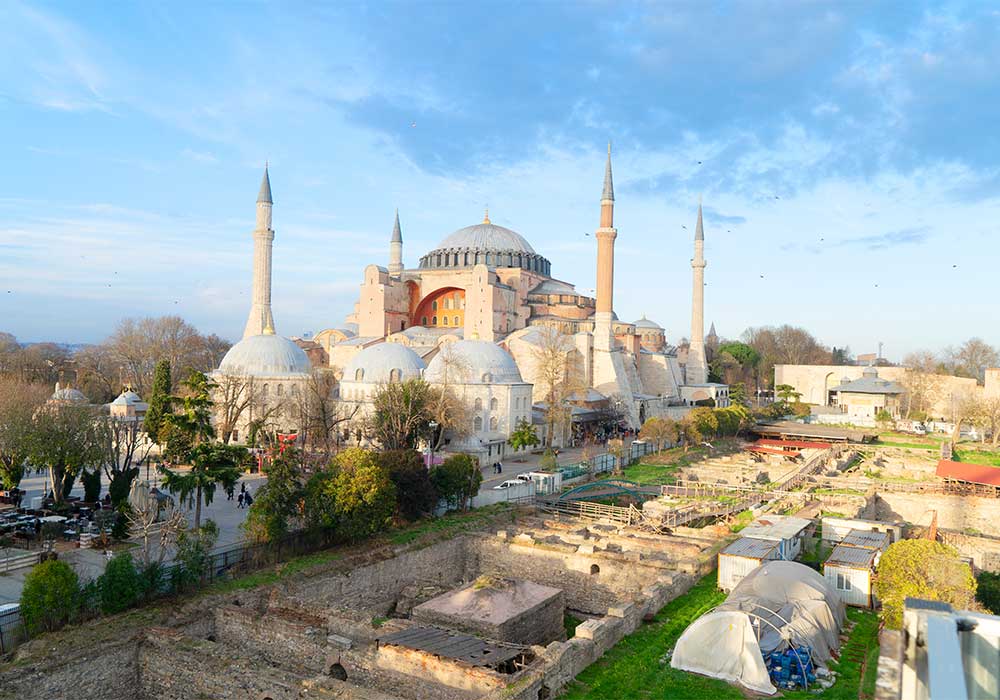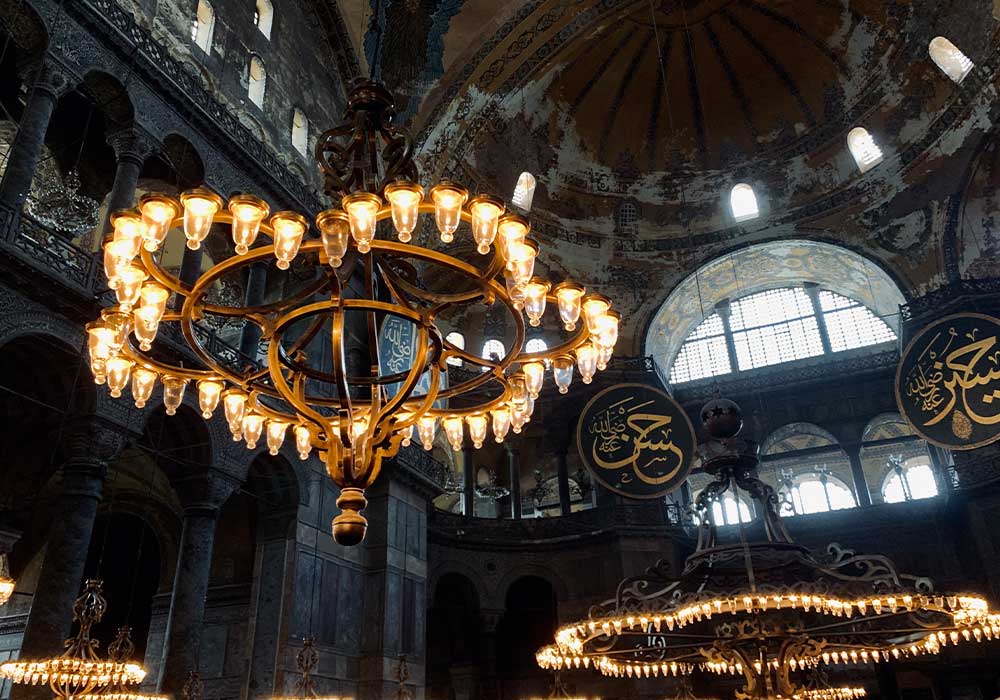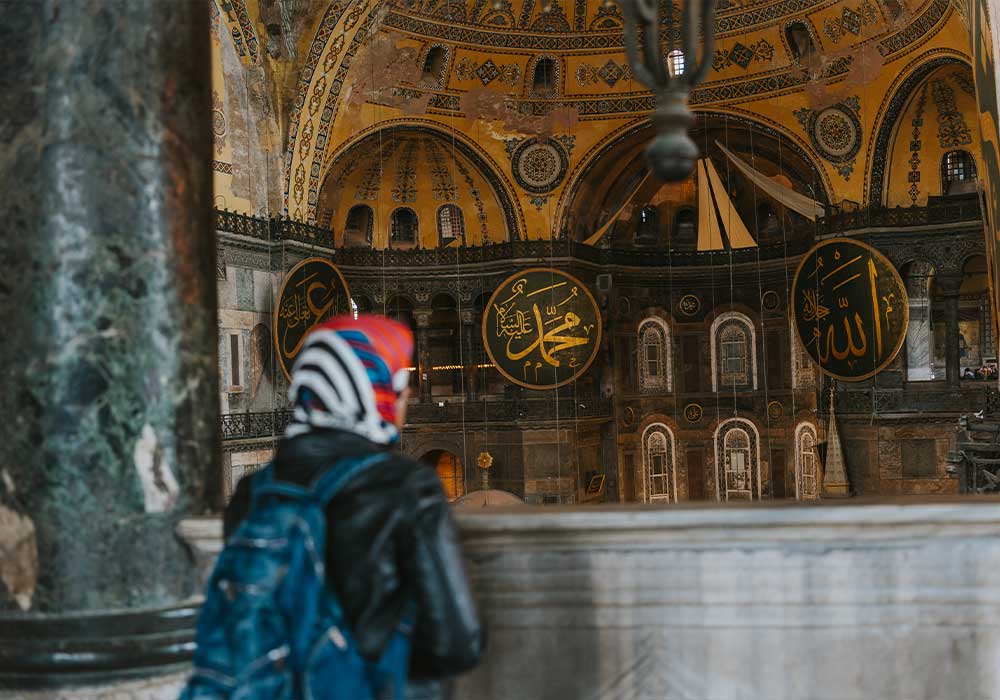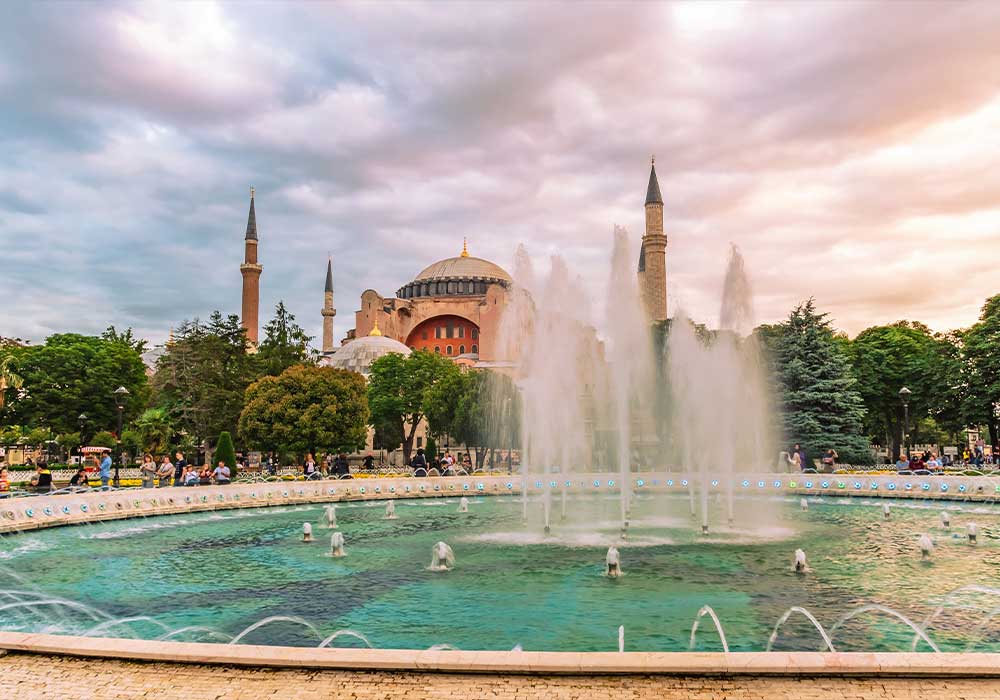Hagia Sophia is much more than a magnificent structure rising above Istanbul’s historic peninsula. Both as the Hagia Sophia Mosque and the Hagia Sophia Museum, it has been a crossroads of different civilizations, cultures, and beliefs for centuries. This unique structure has left its mark in many areas, from architecture to religion, politics to art, and has acquired a different identity in each period.
In this article, we will take a detailed look at the history, architecture, cultural impact, contributions to humanity, and organization of Hagia Sophia.
The Centuries-Long History of Hagia Sophia
Hagia Sophia was built in 537 AD by order of Byzantine Emperor Justinian I. It was an awe-inspiring structure not only for its time but even by today’s technological standards. Approximately 10,000 workers were employed in its construction, which took only five years to complete.

Historical Stages of Hagia Sophia:
- Church Period (537–1453): Hagia Sophia served as the largest cathedral in the Christian world for approximately 900 years.
- Conversion into a Mosque (1453–1935): It was converted into a mosque after the conquest of Istanbul by Mehmed the Conqueror. The mosaics were covered with a thin layer of plaster, minarets were added, and the building was renamed the Hagia Sophia Mosque.
- Museum Period (1935–2020): During the Republican era, Hagia Sophia was converted into a museum. The Hagia Sophia Museum became a symbol that attracted tourists from all over the world.
- Re-conversion into a mosque (2020–present): In 2020, Hagia Sophia was once again converted into a mosque.
Each period has added a distinct layer to the character of Hagia Sophia, transforming it into a multidimensional historical monument.
The legendary architecture of Hagia Sophia
The architecture of Hagia Sophia is not only breathtaking but also a timeless engineering marvel. Its chief architects, Anthemius and Isidore, developed the domed basilica style using the foundations of Roman architecture.

Architectural Details of Hagia Sophia:
- The Great Dome: The central dome, with a diameter of 31 meters, stands 55.6 meters high and adds meaning to the skyline of Istanbul.
- 40 Windows: The windows surrounding the dome allow mystical light to filter into the interior.
- Mosaics: Decorated with depictions of the Virgin Mary, Gabriel, angels, and portraits of emperors.
- Minarets: Four minarets added during the Ottoman period add a touch of Islamic architecture to the structure.
These features have been preserved to this day, enriching both the identity of the Hagia Sophia Mosque and the former Hagia Sophia Museum.
The Cultural and Spiritual Contribution of Hagia Sophia
Hagia Sophia is not just a structure made of stone; it is a symbol that touches people’s souls. It holds different meanings for both tourists and visitors of faith.
What Hagia Sophia Offers People:
- A Sense of Time Travel: Seeing traces of different civilizations under the same roof is a unique experience.
- Spiritual Depth: Praying in Hagia Sophia Mosque or observing traces of past eras provides personal peace.
- Universal Meaning: Its acceptance by both Eastern and Western cultures symbolizes tolerance and unity.
- Education and Awareness: It offers rich content for history enthusiasts, academics, and students.
Visitor Experience at Hagia Sophia Museum and Mosque
The periods during which Hagia Sophia was used as a mosque and museum offer different experiences. However, the common point is that visitors are amazed and admire this historical structure.

| Experience Feature | Hagia Sophia Mosque | Hagia Sophia Museum |
| Use | Worship and visit | Cultural tour |
| Entrance Fee | Free | Ticketed |
| Photography | Limited areas | Free |
| Guided Tours | Limited | Extensive guided tours |
Events and Organizations Held at Hagia Sophia

Types of Events Held at Hagia Sophia:
- Candle and Holiday Programs: Programs with high attendance are held especially during Ramadan and Eid al-Adha.
- History and Art Symposiums: National and international seminars on the historical impact of Hagia Sophia are held.
- Documentary Filming: Ayasofya has hosted documentary filming for major organizations such as the BBC and National Geographic.
- Special Guided Tours: Walking tours with architectural and historical commentary are available for both local and foreign visitors.
Thanks to these events, Ayasofya has become not just a building, but a living cultural center.
Tips for Visiting Ayasofya
If you are thinking of visiting Hagia Sophia, consider the following tips:
- Go Early in the Morning: You will avoid the crowds and catch the best light.
- Be Quiet: This is still an active place of worship.
- Dress Appropriately: Be especially careful when visiting the mosque section.
- Take a guided tour: It will greatly contribute to your understanding of the history, details, and architectural secrets of the building.
- Explore the surroundings: The Sultanahmet Mosque, the Basilica Cistern, and Topkapi Palace are very close to Hagia Sophia.
Final word: Meet history in the heart of Hagia Sophia
Hagia Sophia is a massive bridge connecting the past and the present. Every stone, every dome, every detail whispers a thousand-year-old story to us. Whether you are a worshipper, a history buff, or an art lover, Hagia Sophia Mosque will nourish you with spirituality, while Hagia Sophia Museum will nourish you with knowledge.
Visiting this unique structure is an unmissable opportunity to gain a deeper understanding of Istanbul and the history of humanity.


